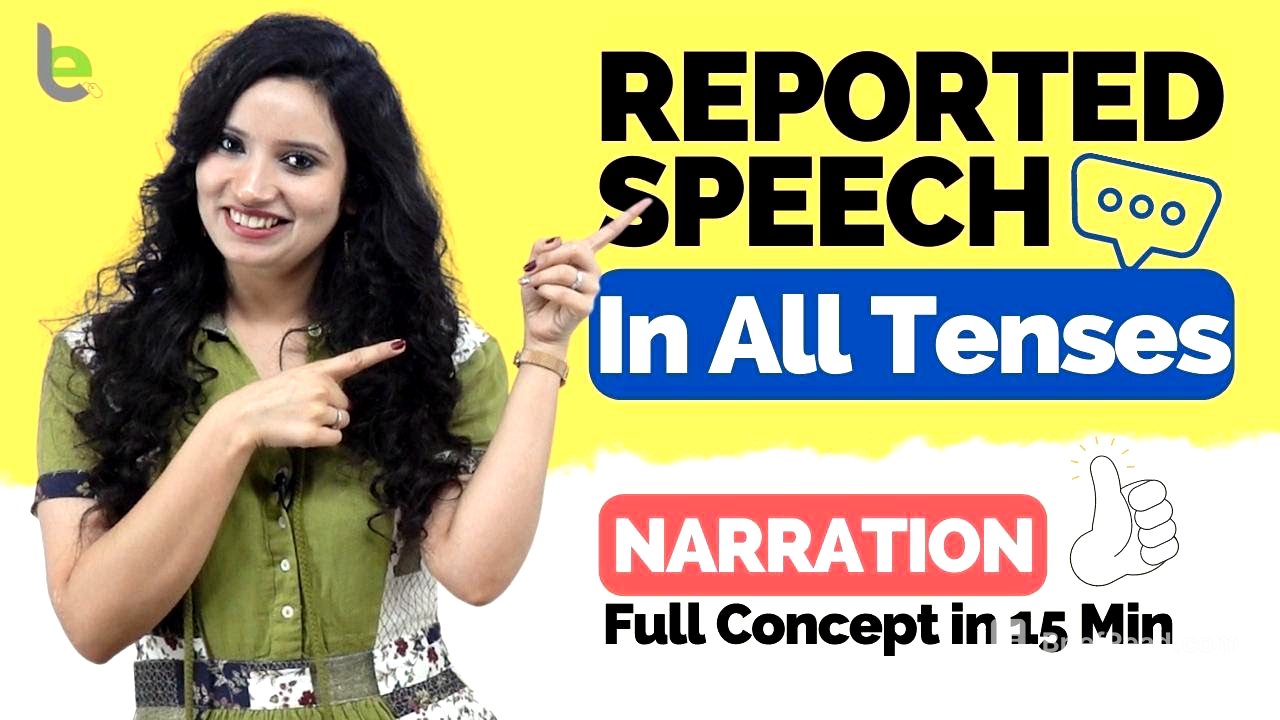TLDR;
This video provides a lesson on reported speech in English, explained in Hindi. It covers how to transform direct speech into reported speech by changing tenses and modal verbs. The lesson includes examples of simple present, present continuous, simple past, past continuous, present perfect, and future tenses, as well as modal verbs like "will," "can," "should," and "may." The video emphasizes the importance of using "said that" or "told" correctly and demonstrates how to adjust verb forms accordingly.
- Transforming direct speech into reported speech involves changing tenses and modal verbs.
- Correct usage of "said that" and "told" is crucial in reported speech.
- Tenses shift to the past when converting to reported speech.
Introduction to Reported Speech [0:04]
The lesson introduces reported speech, explaining that it involves telling someone what another person said. The instructor highlights the importance of understanding grammar for better communication and outlines the topics to be covered, including various tenses and modal verbs.
Understanding Tenses [1:05]
The instructor reviews several tenses with example sentences: present continuous ("I am living in Mumbai"), simple past ("I bought a car"), past continuous ("A boxing match was going on"), present perfect ("Rita has not seen"), past perfect ("I had written"), and simple future ("I will meet you later"). These examples set the stage for demonstrating how each tense changes in reported speech.
Key Phrases: "Said That" vs. "Told" [2:52]
When starting a sentence in reported speech, it's important to use "said that" or "told." If using "said," you can directly follow it with "that." However, if using "told," you must specify who was told (e.g., "She told me that"). It's not necessary to include "that" after "said."
Simple Present to Simple Past [3:55]
The video explains that when converting simple present tense to reported speech, it becomes simple past tense. For example, "I like ice cream" becomes "She said that she liked ice cream." The simple past tense requires the second form of the verb.
Present Continuous to Past Continuous [4:49]
The present continuous tense changes to past continuous tense in reported speech. For instance, "I am living in Mumbai" transforms to "He told me that he was living in Mumbai." Constructing a past continuous sentence requires "was" or "were" along with the verb ending in "-ing."
Past Continuous to Past Perfect Continuous [6:48]
The past continuous tense shifts to past perfect continuous tense in reported speech. For example, "A boxing match was going on" becomes "She said that there had been a boxing match going on." The structure of past perfect continuous includes "had been" followed by the verb ending in "-ing."
Present Perfect to Past Perfect [7:53]
The present perfect tense changes to past perfect in reported speech. For example, "Rita has not seen" becomes "She said that Rita had not seen." The past perfect tense uses "had" followed by the third form of the verb.
Past Perfect Remains Unchanged [9:10]
The video notes that the past perfect tense remains the same in reported speech. Only the subject might need to be adjusted. For instance, "I had taken English classes" becomes "She said that she had taken English classes."
Simple Future: "Will" to "Would" [10:11]
In reported speech, "will" changes to "would." For example, "I will see you later" becomes "She said that she would see me later."
Modal Verb "Would" Remains Unchanged [10:43]
The modal verb "would" remains unchanged in reported speech. For example, "I would help" becomes "She said that she would help."
Modal Verb "Can" to "Could" [11:26]
The modal verb "can" changes to "could" in reported speech. For instance, "I can speak English" becomes "She said that she could speak English."
Modal Verbs "Should" and "May" [11:59]
The modal verb "should" remains the same in reported speech. The modal verb "may" changes to "might."
Conclusion [12:32]
The lesson concludes by summarizing that reported speech generally involves shifting tenses to the past. The instructor encourages viewers to practice these simple forms to improve their use of reported speech and mentions that more advanced rules will be covered in future lessons.









